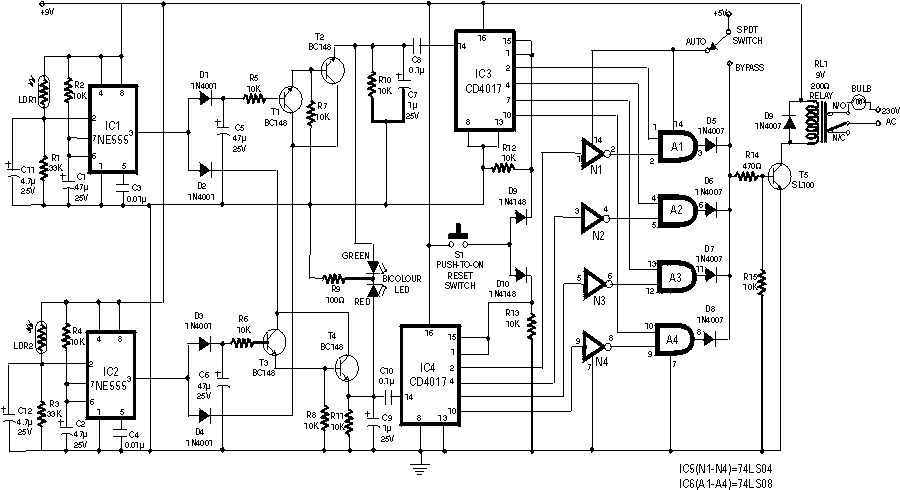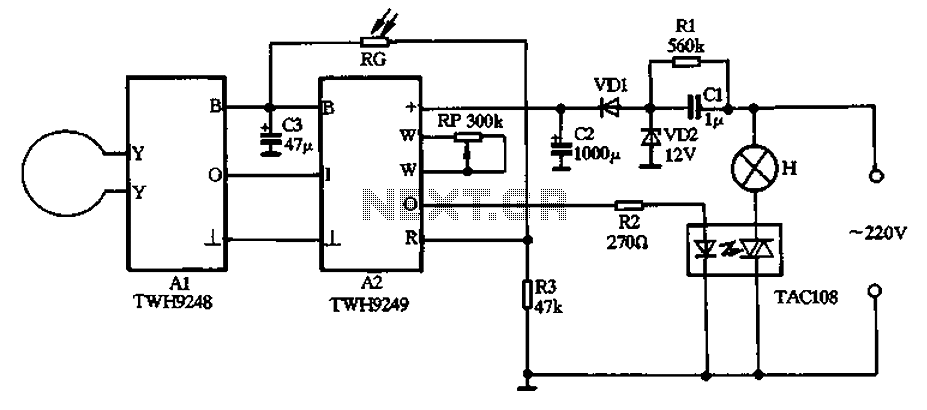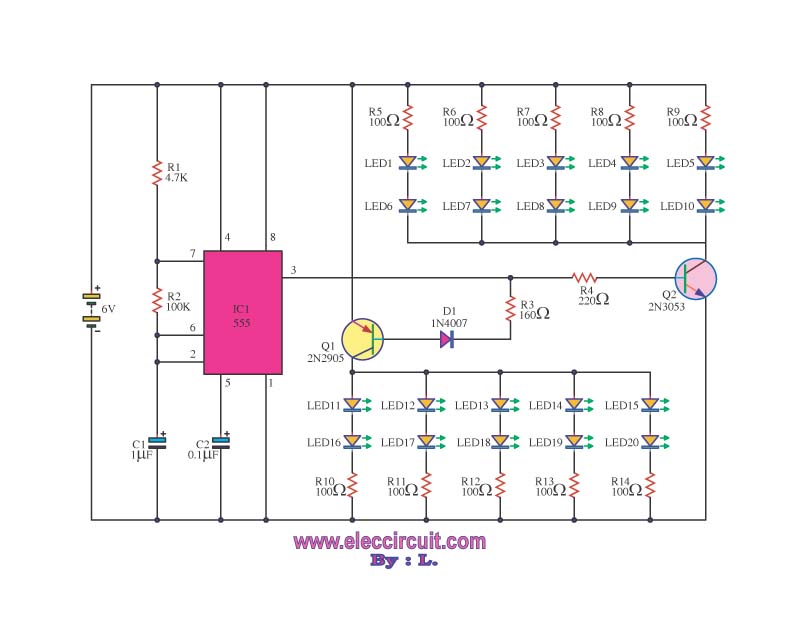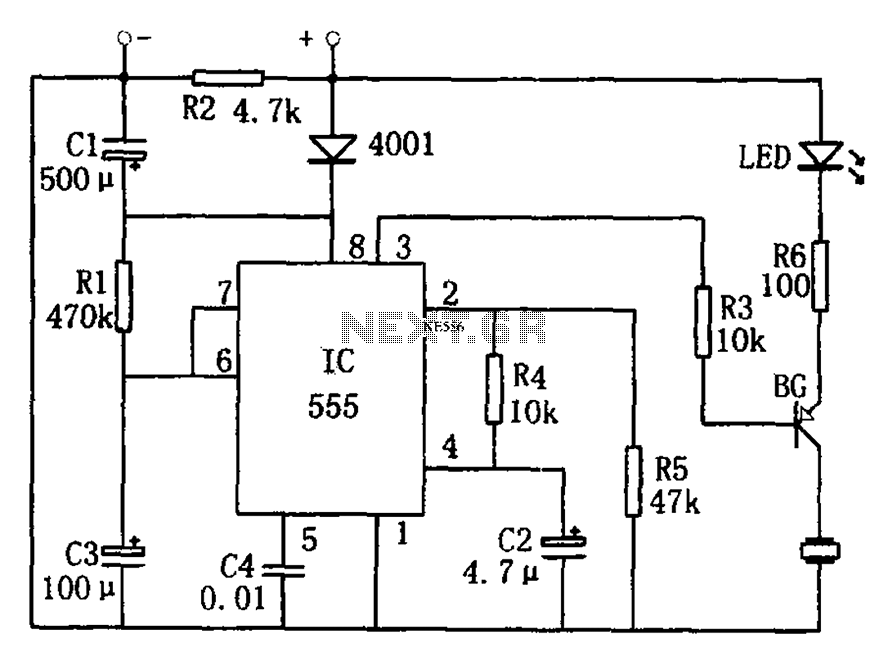
Xenon Strobe Light 110V by SCR
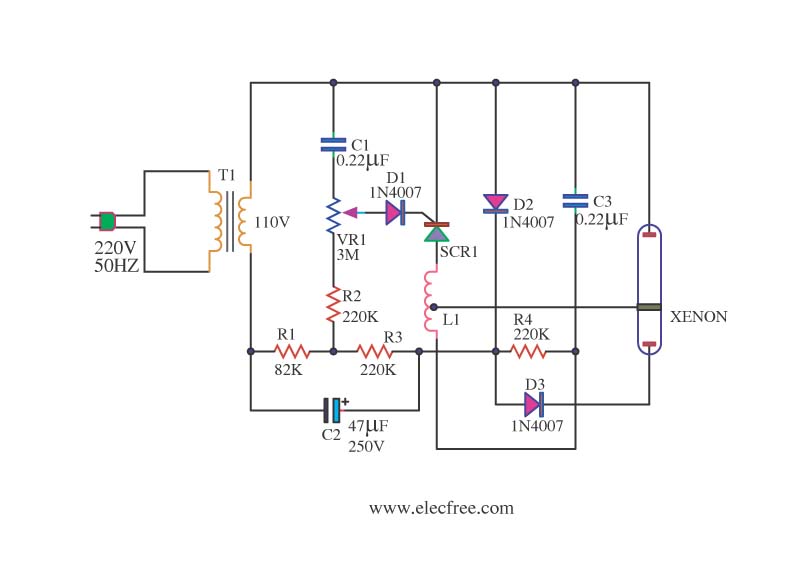
This is a Xenon Strobe Light circuit that utilizes a Xenon tube to produce various brightness levels. The blinking speed can be finely adjusted to be fast or slow using VR1. The circuit incorporates a Silicon Controlled Rectifier (SCR).
The Xenon Strobe Light circuit is designed to generate high-intensity flashes of light, making it suitable for applications such as photography, visual effects, and signaling. The core component, the Xenon tube, operates by ionizing gas within the tube, allowing it to produce a bright flash when a high voltage is applied.
The circuit's operation begins with the charging of a capacitor, which stores energy until it reaches a predetermined voltage. At this point, the SCR is triggered, allowing the stored energy to discharge rapidly through the Xenon tube, resulting in a bright flash. The brightness of the flash can be adjusted by varying the charge voltage, which is controlled through a variable resistor (VR1). This feature enables the user to select the desired intensity of the light output.
In addition to brightness control, the blinking speed can be modified by adjusting the timing components in the circuit. This typically involves changing the values of resistors and capacitors associated with the SCR trigger circuit, allowing for a wide range of flashing rates from rapid strobe effects to slower, more pronounced flashes.
The circuit may also include additional components such as diodes for protection against back EMF, which can potentially damage the SCR or other sensitive components. A power supply is necessary to provide the required voltage for the Xenon tube, which is typically in the range of 300 to 400 volts, depending on the specific tube used.
Overall, the Xenon Strobe Light circuit is a versatile and effective solution for generating high-intensity flashes of light, with adjustable brightness and blinking speed, suitable for various applications in both professional and hobbyist settings.This is Xenon Strobe Light circuit, model continual use a tube Xenon at give many brightnesses. By can fine blink fast or slow get , with VR1. By have SCR. 🔗 External reference
The Xenon Strobe Light circuit is designed to generate high-intensity flashes of light, making it suitable for applications such as photography, visual effects, and signaling. The core component, the Xenon tube, operates by ionizing gas within the tube, allowing it to produce a bright flash when a high voltage is applied.
The circuit's operation begins with the charging of a capacitor, which stores energy until it reaches a predetermined voltage. At this point, the SCR is triggered, allowing the stored energy to discharge rapidly through the Xenon tube, resulting in a bright flash. The brightness of the flash can be adjusted by varying the charge voltage, which is controlled through a variable resistor (VR1). This feature enables the user to select the desired intensity of the light output.
In addition to brightness control, the blinking speed can be modified by adjusting the timing components in the circuit. This typically involves changing the values of resistors and capacitors associated with the SCR trigger circuit, allowing for a wide range of flashing rates from rapid strobe effects to slower, more pronounced flashes.
The circuit may also include additional components such as diodes for protection against back EMF, which can potentially damage the SCR or other sensitive components. A power supply is necessary to provide the required voltage for the Xenon tube, which is typically in the range of 300 to 400 volts, depending on the specific tube used.
Overall, the Xenon Strobe Light circuit is a versatile and effective solution for generating high-intensity flashes of light, with adjustable brightness and blinking speed, suitable for various applications in both professional and hobbyist settings.This is Xenon Strobe Light circuit, model continual use a tube Xenon at give many brightnesses. By can fine blink fast or slow get , with VR1. By have SCR. 🔗 External reference
